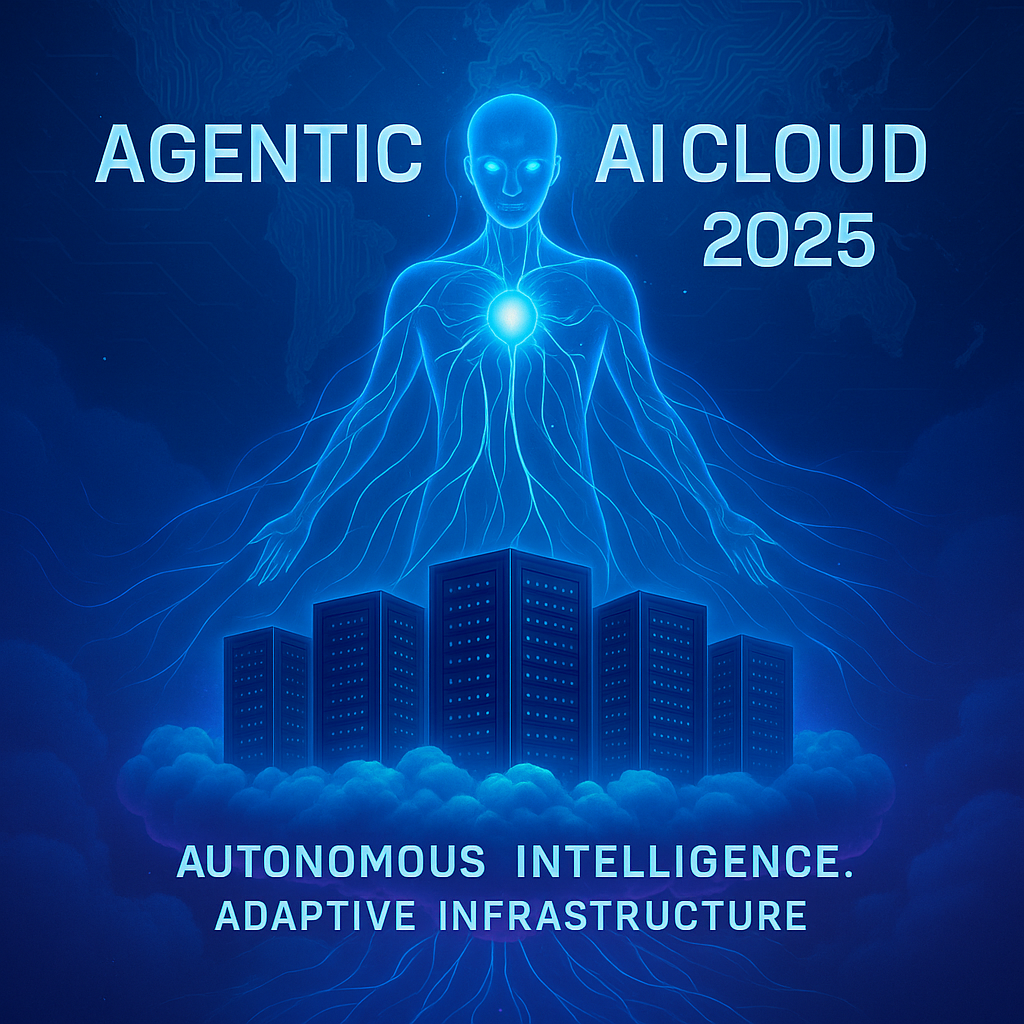The Dawn of Autonomous AI in Cloud Computing

The year 2025 marks a pivotal shift in artificial intelligence (AI) as Agentic AI self-directed, autonomous systems capable of independent decision-making transforms cloud infrastructure. Unlike traditional AI models that rely on predefined rules and human oversight, Agentic AI operates with agency, dynamically optimizing cloud resources, enhancing security, and automating complex workflows with minimal human intervention.
As enterprises demand faster, more scalable, and cost-efficient cloud solutions, Agentic AI is emerging as the backbone of next-generation cloud computing. This article explores how this revolutionary technology is reshaping cloud infrastructure, its key applications, benefits, challenges, and what businesses must do to stay ahead.
What is Agentic AI?
Agentic AI refers to AI systems that exhibit goal-directed behavior, self-learning, and autonomous decision-making. Unlike conventional AI, which follows static programming, Agentic AI can:
- Adapt in real-time to changing environments
- Self-optimize performance without human input
- Initiate actions based on predictive analytics
- Collaborate with other AI agents to solve complex problems
This evolution is powered by reinforcement learning, generative AI, and multi-agent systems, enabling AI to function as an independent “agent” within cloud ecosystems.
How Agentic AI is Revolutionizing Cloud Infrastructure in 2025
1. Autonomous Cloud Resource Management
Agentic AI is eliminating inefficiencies in cloud computing by:
- Dynamic Scaling: Automatically adjusting compute, storage, and bandwidth based on real-time demand.
- Cost Optimization: Predicting workload spikes and scaling down idle resources to reduce expenses.
- Self-Healing Systems: Detecting and resolving failures (e.g., server crashes, network latency) without human intervention.
Example: AWS’s AutoGoverning Cloud now uses Agentic AI to reduce cloud costs by up to 40% while maintaining peak performance.
2. AI-Driven Cybersecurity & Threat Detection
With cyber threats growing more sophisticated, Agentic AI enhances cloud security by:
- Proactive Threat Hunting: Identifying and neutralizing zero-day vulnerabilities before exploitation.
- Behavioral Anomaly Detection: Learning normal user patterns and flagging deviations in real time.
- Automated Incident Response: Isolating breaches and deploying countermeasures within milliseconds.
Stat: Gartner predicts that by 2025, 60% of cloud security operations will be managed autonomously by AI agents.
3. Self-Optimizing DevOps & CI/CD Pipelines
Agentic AI is accelerating software development by:
- Automating Code Reviews: Detecting bugs, suggesting optimizations, and even rewriting inefficient code.
- Predictive Deployment: Forecasting infrastructure needs before updates are rolled out.
- AI-Powered Testing: Running thousands of simulated environments to ensure flawless releases.
Case Study: GitHub’s AI-Driven DevOps now reduces deployment times by 70% using autonomous AI agents.
4. Intelligent Data Orchestration & Analytics
Modern enterprises generate petabytes of unstructured data Agentic AI helps by:
- Auto-Classifying Data: Tagging, indexing, and storing information without manual input.
- Real-Time Analytics: Processing streaming data for instant business insights.
- Predictive Data Routing: Ensuring critical datasets are prioritized for low-latency access.
Example: Snowflake’s AI-Optimized Data Cloud leverages Agentic AI to cut query times by 50%.
5. Multi-Agent Collaboration for Complex Workflows
Future cloud environments will rely on AI agent swarms teams of specialized AI models working together:
- Negotiating Agents: Allocating resources between competing workloads.
- Specialized Sub-Agents: Handling niche tasks (e.g., fraud detection, customer support).
- Federated Learning: Sharing insights across AI agents while maintaining data privacy.
Trend: Microsoft Azure’s Agentic Fabric enables AI swarms to autonomously manage hybrid cloud deployments.
Key Benefits of Agentic AI in Cloud Computing
| Benefit | Impact |
|---|---|
| Cost Efficiency | Reduces cloud waste via real-time optimization (up to 40% savings). |
| Enhanced Security | Detects threats 10x faster than human analysts. |
| Faster Innovation | Cuts DevOps cycles by 50-70% with AI automation. |
| Scalability | Handles millions of concurrent tasks without performance drops. |
| Resilience | Self-healing systems reduce downtime by 90%. |
Challenges & Risks of Agentic AI Adoption
Despite its potential, Agentic AI introduces new challenges:
- Ethical Concerns: Who is accountable if an AI agent makes a harmful decision?
- Over-Reliance on Autonomy: Human oversight remains critical for high-stakes decisions.
- Integration Complexity: Legacy systems may struggle to adapt to AI-driven workflows.
- Regulatory Uncertainty: Governments are still defining AI governance frameworks.
Solution: A hybrid approach combining AI autonomy with human-in-the-loop safeguards ensures responsible deployment.
The Future of Agentic AI in Cloud Computing (2025 & Beyond)
By 2026, Agentic AI is expected to:
✔ Dominate 80% of cloud operations (IDC forecast).
✔ Enable fully autonomous cloud platforms (Google’s Agentic Cloud Vision).
✔ Merge with quantum computing for unprecedented speed.
Businesses must invest in AI-ready infrastructure, upskill teams, and adopt ethical AI frameworks to stay competitive.
Conclusion: Is Your Business Ready for Agentic AI?
Agentic AI is not just an evolution it’s a revolution in cloud computing. From autonomous resource management to self-defending cybersecurity, AI agents are redefining efficiency, scalability, and innovation.
Key Takeaways:
- Agentic AI enables self-optimizing, cost-efficient, and ultra-secure cloud environments.
- Early adopters gain a massive competitive edge in speed and automation.
- Balancing autonomy with oversight is crucial for sustainable AI adoption.
Is your cloud infrastructure prepared for the Agentic AI revolution? The future belongs to those who act now.